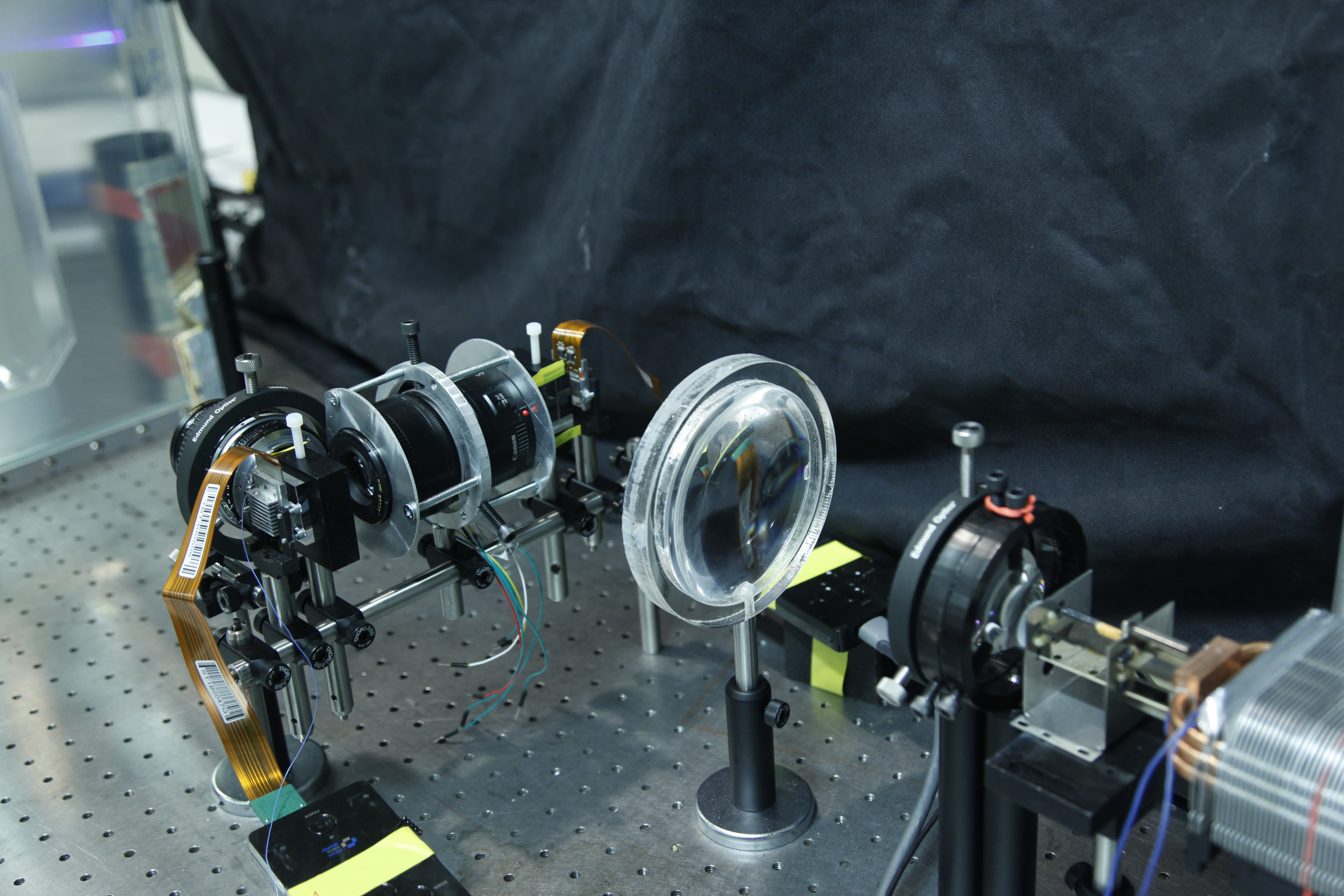
Compressive light field projection for glasses-free 3D display. The system comprises a single light field projector and a completely passive screen. The angular range of the light field emitted from the projector is limited to the size of the projection lens aperture, hence very small. Keplerian telescopes inspire our screen design – the angular range of incident light is expanded for an observer on the other side, creating a field of view that is suitable for glasses-free 3D display. A prototype projector was implemented from scratch using two high-speed spatial light modulators (SLMs); a prototype screen was fabricated from two lenticular sheets with different focal lengths, mounted back-to-back. With the implemented system, we achieve high-rank light field synthesis (center) for human observers with a critical flicker fusion threshold that is smaller than the product of the SLM refresh rates and the rank of the synthesized light field. Note that color results above are composited from multiple images captured from our grayscale prototype.
Abstract
For about a century, researchers and experimentalists have strived to bring glasses-free 3D experiences to the big screen. Much progress has been made and light field projection systems are now commercially available. Unfortunately, available display systems usually employ dozens of devices making such setups costly, energy inefficient, and bulky. We present a compressive approach to light field synthesis with projection devices. For this purpose, we propose a novel, passive screen design that is inspired by angle-expanding Keplerian telescopes. Combined with high-speed light field projection and nonnegative light field factorization, we demonstrate that compressive light field projection is possible with a single device. We build a prototype light field projector and angle-expanding screen from scratch, evaluate the system in simulation, present a variety of results, and demonstrate that the projector can alternatively achieve super-resolved and high dynamic range 2D image display when used with a conventional screen.












